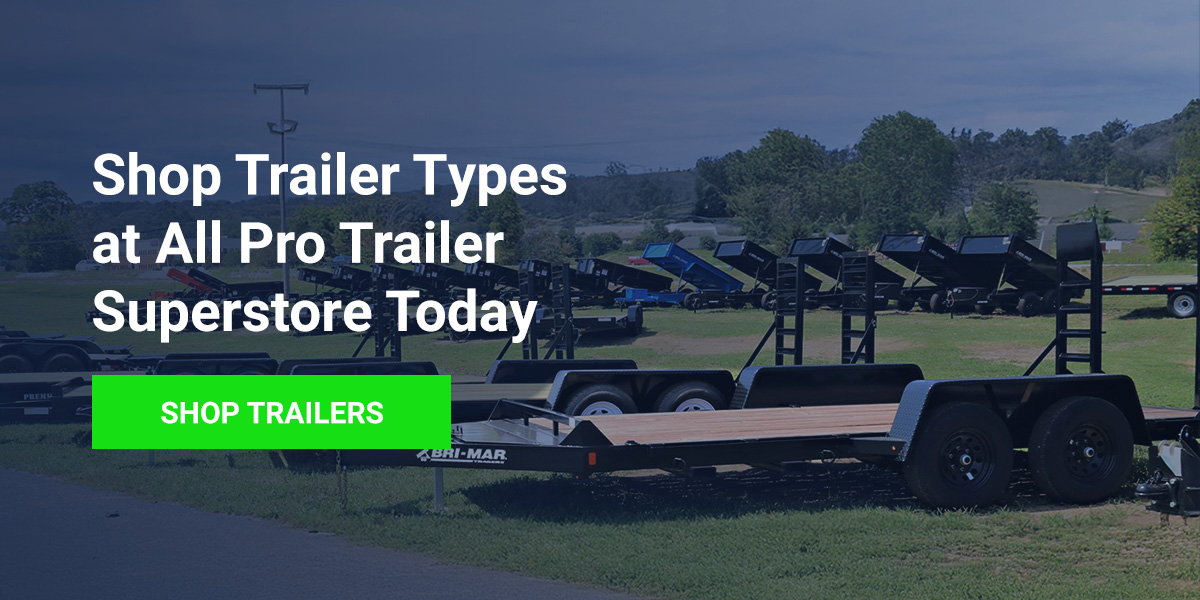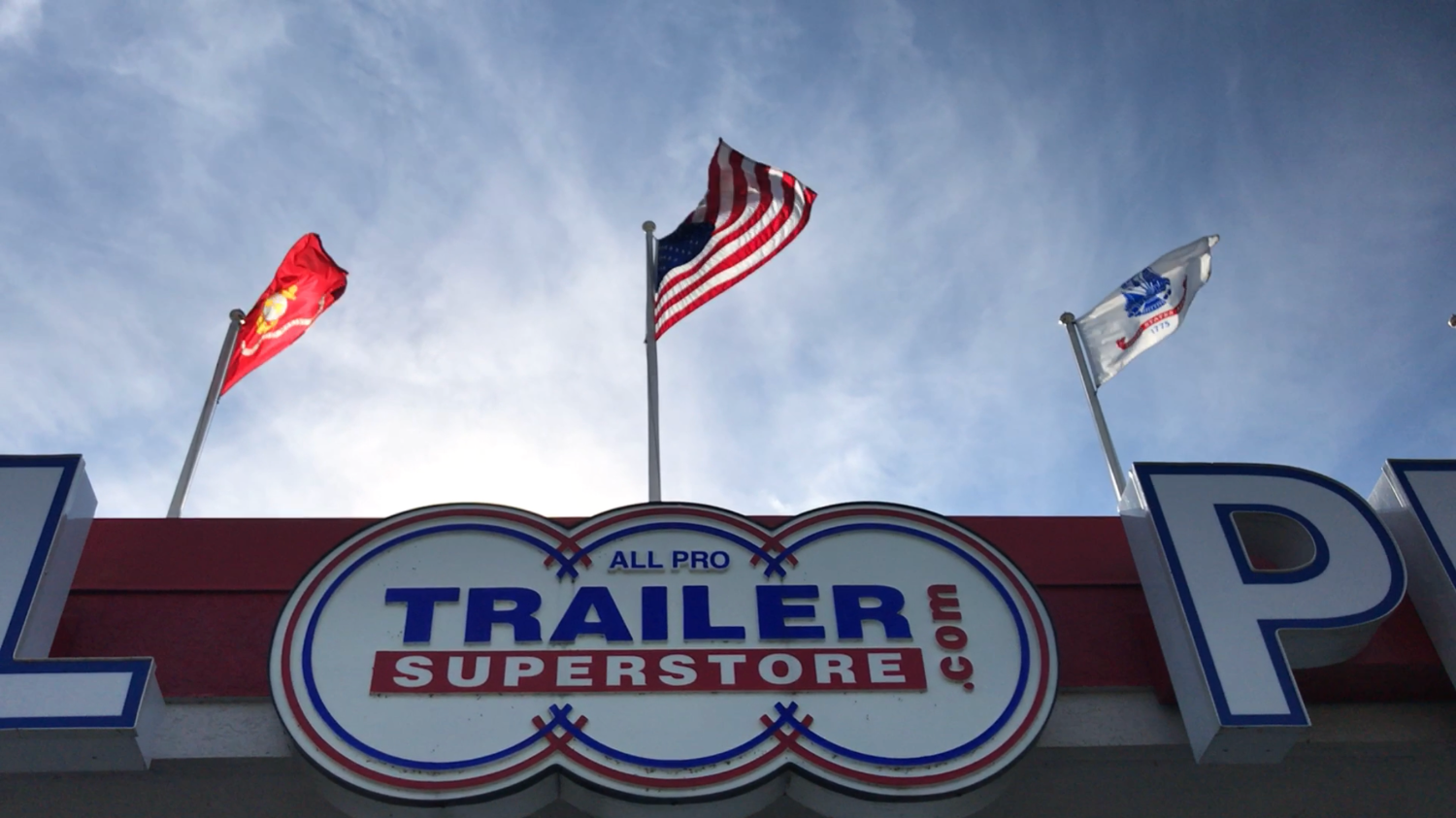Types of Equipment Trailers
May 29, 2014Last Updated on February 12, 2025 by Daniel Houck
Last Updated on February 12, 2025 by allprotrailersuperstore
Equipment trailers accommodate and move cargo loads safely and efficiently between locations. Trailers are available in various widths, capacities and lengths to fit the cargo you haul. Understanding the differences between all your options will help you find the right trailer for your hauling needs.
8 Most Popular Trailer Types for Your Hauling Needs
The market has many types of trailers for you to choose from. Some of the most common trailer types include:
1. Landscape Trailers
Landscape trailers are a type of utility trailer that hauls landscaping equipment like lawn mowers, tow tractors, lumber and mulch. These trailers can support a commercial landscaping business or personal use. Landscape trailers with a single axle can be pulled by a small SUV, but bigger trailers will need a heavy-duty vehicle.
2. Deckover Trailers
Deckover trailers have a flat bed 102 inches wide to haul wide machines and cargo. Since these trailers have open sides, you can load them with a forklift. These hefty trailers must be hauled with a heavy-duty vehicle like a truck.
3. Enclosed Trailers
Enclosed trailers have walls and a roof to completely enclose the trailer bed. This design protects your load from the weather and theft — you can only access the trailer through a locked door. You can haul small equipment and tools for contract work and more.
4. Gooseneck Trailers
Gooseneck trailers have a special design that attaches to the truck’s bed instead of the hitch. This design choice improves the trailer’s stability and weight distribution, making it ideal for large cargo. Some models have a removable gooseneck to make loading and unloading easier.
5. Toy Hauler Trailers
Toy hauler trailers combine the storage space of a trailer and the living amenities of a camper. The front of the trailer has a bedroom, bathroom and kitchen for you to stay in, and the back half is an open trailer space to haul cargo. You can haul bicycles, all-terrain vehicles, motorcycles, grills and camping gear to use during your camping trip.
6. Cargo Trailers
Cargo trailers are all-purpose trailers that can haul virtually any cargo. Most cargo trailers are enclosed to keep your loads secure. You can add cargo control mechanisms in the trailer to keep the load steady during travel. The size of the cargo trailer determines what type of vehicle you need for towing.
7. Dump Trailers
Dump trailers are trailer beds with a hydraulic lever underneath to dump the load. This trailer type is enclosed on all sides, with unloading gate options you can choose from based on your load.
Dump trailers can haul nearly anything that a flatbed trailer can. They’re also ideal for transporting overweight, loose items, like scraps and waste from the jobsite.
8. Tilt Trailers
Tilt trailers are named for the tilting deck. The back end of the deck can be lowered to the ground, so you can drive a small vehicle or machine onto the deck. Once the equipment is secure, you can tilt the deck back for transport. This trailer type is one of the most convenient ways to haul equipment with wheels or tracks. You will need a ¾-ton or 1-ton truck to haul a tilt trailer.
Shop Trailer Types at All Pro Trailer Superstore Today
All Pro Trailer Superstore is one of the top trailer dealers in the country. Our inventory includes various models and accessories from some of the biggest manufacturers in the industry. As a full-service provider, we can also take care of inspections, customizations, financing, delivery and more.
Browse our equipment trailers for sale online or contact us for more information! Our team will help you find the right trailer for your hauling needs.



